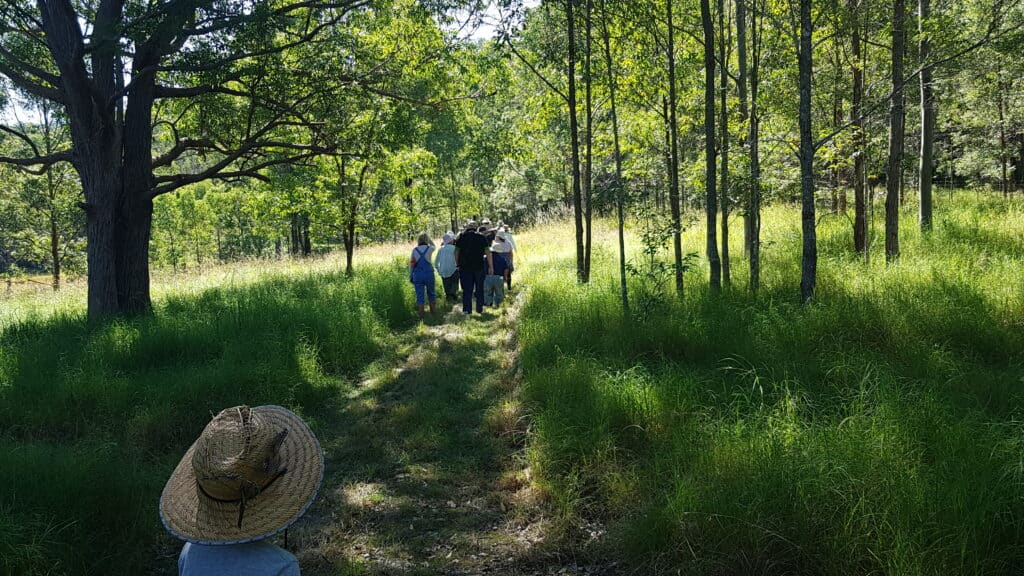
Hastings Landcare installed 190 nest boxes across 19 properties in the Hastings Region. Boxes cater for threatened owl species and their prey. Species likely to use our boxes include powerful owl, masked owl and sooty owl. The smaller ‘prey’ boxes have potential to help additional threatened species such as yellow-bellied glider, squirrel glider, greater glider and micro bat species. This Landcare Led Bushfire Recovery Project has been supported by the Australian Government’s Bushfire Recovery Program for Wildlife and their Habitat.
The loss of hollow bearing trees is listed as a Key Threatening Process in NSW. Contributing factors to the ongoing loss of hollows including bushfires, development, land clearing and forest harvesting. Hastings Birdwatchers representative Sue Proust says, “this project is a fantastic opportunity to not only create vital habitat, but create greater awareness of the significance of natural hollows and the need to preserve them’. Large hollows suitable for owl species can take hundreds of years to form!

Properties chosen through an expression of interest process, receive an installed owl box and a combination of smaller boxes or hollows. Additionally, a newly developed tool the Hollow Hog was used to create natural hollows. The Hollow Hog is a unique boring tool that safely and efficiently excavates hollows in living and dead trees. Bernard Whitehead from Saltair Flora & Fauna says, ‘We can construct numerous hollows in a single tree to form a habitat tree for wildlife”. Using these techniques, this project created more homes for wildlife in the Port Macquarie Hastings LGA.
Dr Alexandra Knight is an environmental scientist at Charles Sturt University with over 20 years’ experience. Dr Knight supported the project by providing rigorous scientific advice including best practice use of nest boxes and artificial hollows. Dr Knight says, “understanding the thermal properties of nest boxes greatly contributes to effectiveness and use by wildlife” .In the long term, Hastings Landcare aims to create opportunities for Undergraduate students , TAFE students and schools groups to be involved in annual monitoring, creating more awareness of the significance of hollows.
Nest boxes all over the North Coast were monitored by Landcare Groups to establish valuable data, to improve future nest box project and provided information on particular species. North Coast Regional Landcare Coordinator Josh Keating says, “North Coast Regional Landcare is a strong network. Data collected and shared across a whole region provides a much greater insight into what is happening out there!” Many Landcare groups between the Hastings and Tweed are undertaking nest box projects this year.
The Hollows in the Hastings Project has been a very successful. This Landcare Led Bushfire Recovery Project has been supported by the Australian Government’s Bushfire Recovery Program for Wildlife and their Habitat.
